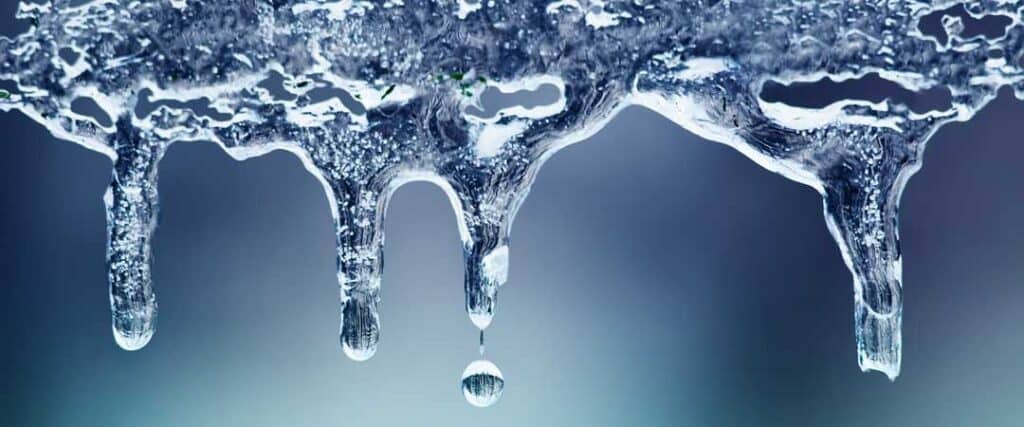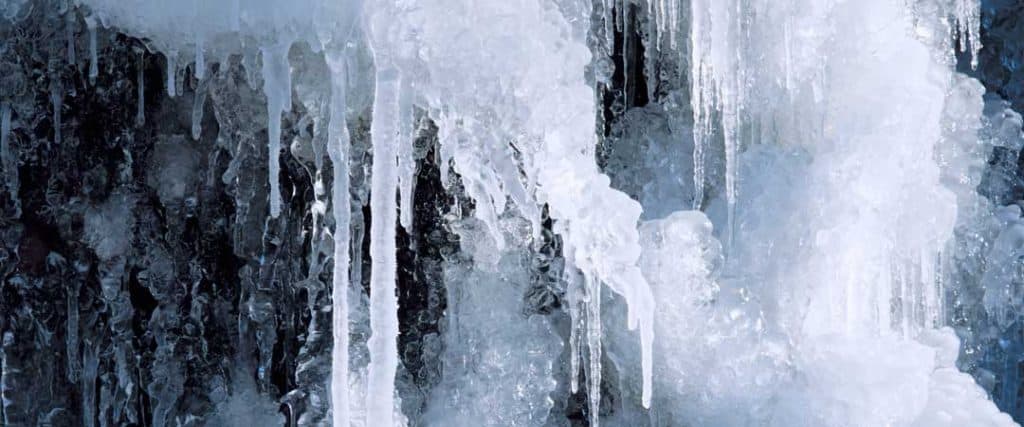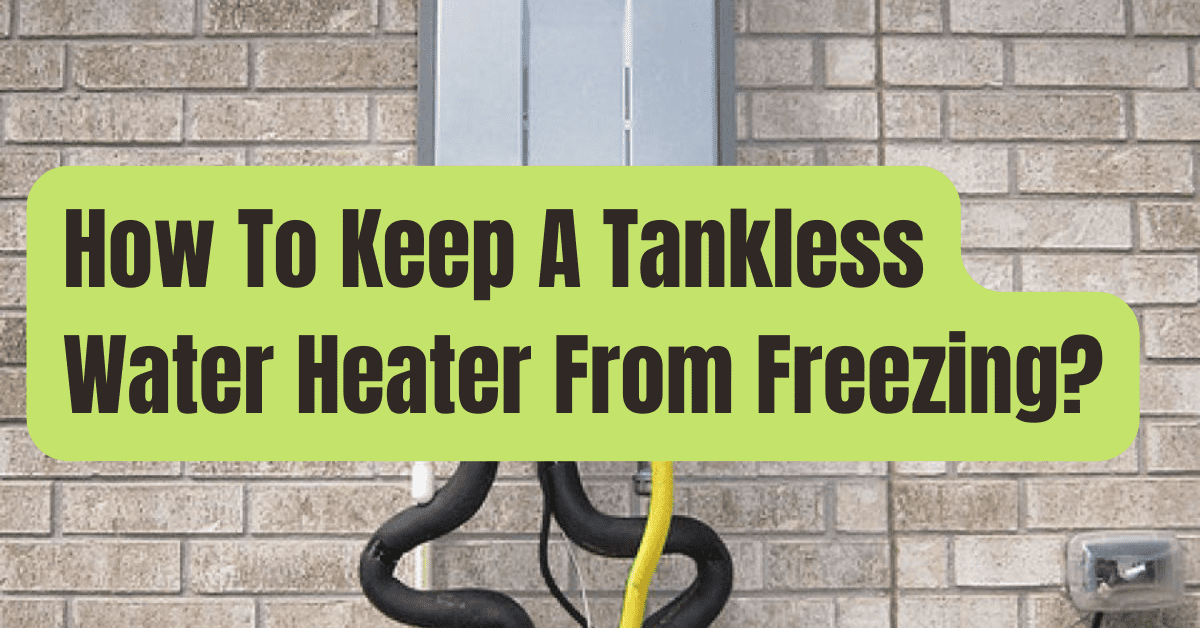When the weather becomes chilly and the temperatures begin to fall, your tankless water heater is more likely to freeze up and have other problems that are exacerbated by the weather.
Whether you live in a region that has severe winters and need to winterize your hot water heating system or you simply do not live in an area that experiences mild winters, your tankless system is going to need a little bit of extra maintenance.
This article will provide you with the knowledge you need to prevent the tankless water heater you have from freezing over when the temperature drops.
However, it is essential to keep in mind that the guidelines provided by different manufacturers may differ, and you should always refer to the owner’s handbook for specifics on the tankless water system that you have.
Is There a Risk of Freezing with a Tankless Water Heater?
Tankless water heaters need more maintenance and attention throughout the winter months.
Even water heaters that are situated inside run the risk of experiencing problems when the temperature drops.
The vast majority of warranties offered by manufacturers do not cover damage that has been caused by freezing.
However, a lot of manufacturers, like Rinnai and Rheem, have built in some kind of freeze protection, which enables the unit to protect itself when the temperature drops below freezing.
This is something that you should look for in a brand.
The Rinnai tankless water heaters feature two layers of insulation that work together to shield them from the elements and keep them from freezing.
The installation of ceramic heaters, which are installed on the heat exchanger and other interior sections of a Rinnai heater, as well as the water lines, is the principal form of protection for a Rinnai heater.
Ceramic heaters like this start to work as the temperature falls into the low 30s, preventing the internal components from freezing at that time.
In the event that the ceramic heaters do not work for any reason, or if the temperature lowers too quickly, a supplementary mechanism of freeze prevention is also included into the device.
This method employs a sensor that is housed inside the tankless water heater to ascertain whether or not the temperature is below freezing.
In the event that the sensor is activated, the appliance will switch on by itself for a brief period of time and will then continue to turn on and off again until the danger of freezing has passed.
As long as the Rinnai unit has access to both electrical power and gas, any of these approaches may be used to prevent the unit from being frozen over in the event that temperatures drop below freezing.
Be careful to consult the owner’s handbook of your tankless water heater for precise instructions on how to use it.

How to Unfreeze a Tankless Water Heater When It’s Frozen
Pipes and water heaters may both freeze up when the temperature drops below freezing.
Do not operate the unit if the external piping to the water heater has frozen or if the water heater itself has frozen.
Proceed in the following manner:
- TURN OFF the Electrical Power and the Gas and Water Shutoff Valves, and then CLOSE the Valves.
- Give the tankless unit some time to defrost. Simply opening the Water Supply Valve will let you to determine whether or not the device has defrosted. If water is flowing out of the tankless water heater, then the ice has been melted.
- Leaks should be checked for in all of the plumbing, including the exterior pipes, the interior components, and the plumbing.
- If everything seems to be in order, you may NOW switch ON the Electrical Power and OPEN the Valves for the Gas and Water Supply.
Preventing the Freezing of Pipes Outside the Building
Pipes and valves that are exposed to the elements that run to and from a tankless water heater are susceptible to freezing if they are not covered from the cold.
However, many homeowners fail to protect these pipes and valves.
The good news is that you may save a significant hassle and keep your pipes from freezing by wrapping them with either pipe wrap insulation or pipe heating cable.
Both of these options are available.
Both of these approaches are uncomplicated, won’t break the bank, and are easily accessible.
Many types of pipe heating cables are approved for use in outdoor environments and may prevent pipe freezing in temperatures as low as -50 degrees Fahrenheit.
Although there are homeowners who prefer to insulate their pipes using pipe wrap after first wrapping their pipes with heating cable, it is important to remember to verify with the manufacturer’s guidelines for the particular items you are using.

How to Prevent the Freezing of a Water Heater That Does Not Have a Tank
Even though it has built-in protection against freezing, your tankless water heater may need to have the water drained from it on occasion.
In the event that you lose electricity, your tankless water heater will be helpless against the freezing temperatures and may freeze up.
If you are going to be gone for a lengthy period of time, it is strongly recommended, especially if you live in a cold environment, that you empty your tankless water system.
Although tankless heaters may always be emptied manually, adding a set of freeze prevention solenoid valves is a great approach to offer you peace of mind during the harsh winter weather.
This can be accomplished in a number of different ways.
In the event that the power goes out, these valves will cause your tankless unit’s water supply to be drained automatically.
Drain down solenoid valves, also known as freeze protection solenoid valves or “normally open” drain down solenoid valves, are another name for freeze protection solenoid valves.
They are built to be in an open position at all times and rely on an electrical current to maintain their closed position.
When there is a disruption in the power supply, the tankless water heater’s valves will open on their own, allowing the water to drain away.
Especially in colder climates, protecting your tankless heating system by installing freeze protection solenoid valves is a fantastic approach to ensure its safety.
On the other hand, if you decide against adding this additional layer of safety, it is recommended that you follow these best practices in order to safeguard your tankless water heater in the event that there is a power loss during the winter:
- Take off the Pump Drain Plug and open it up by hand.
- Take off the plug from the condensate trap drain.
- Take off the plug from the water drain.
Rinnai Drain Down Solenoid Valves
One of the most effective measures you can take to protect your outside unit from freezing temperatures is to have a freeze prevention solenoid valve kit installed.
#1. A Step-by-Step Guide to Draining Your Tankless Water Heater Manually
In the event that your tankless water heater does not have the freeze prevention solenoid valve kit installed, you will need to empty the unit manually.
This is the case regardless of whether you are draining the unit because of cold weather conditions or for another reason.
Manual draining may not be as convenient, but it is an equally efficient method for eliminating water from the inside of a tankless water heater.
The following steps should be taken in order to manually empty your tankless water heater:
- You need to cut off the supply of cold water as well as the supply of gas.
- Put the Temperature Control into the OFF position.
- Turn off the electrical supply that is connected to the water heater.
- We strongly suggest turning on a hot water tap or faucet somewhere within the home.The pressure within the heater will begin to decrease as a result of this action.
- Put a bucket below the water heater to collect any water that may spill out.
- Take off the Drain Caps that are located on both the Hot and the Cold Isolation Valves.
- THREATEN the valves to open.Because the hot water is under pressure, the unit runs the risk of it “shooting out.” Caution is advised since the water could be quite warm.
- REMOVE the filter from the cold water inlet.
- You need to take off any drain plugs that are present in your tankless water heater.They are situated on the bottom of the tankless unit at their respective locations.(Drain Plug for the Water Supply, Drain Plug for the Pump, Drain Plug for the Condensate Trap, and Drain Plug for the Hot Water Supply)
View the Video Here
#2. The Step-by-Step Guide to Getting Your Tankless Water Heater Back to Its Regular Operating Condition
When you are ready to begin using your tankless water heater, you will need to reset it so that it operates according to its typical settings.
This step is quite simple, and it is essentially the reverse of the technique for draining that was described previously.
This is what you should do:
- Make sure that all of the drain plugs in the unit have been removed, that all of the hot water taps and faucets within the home have been turned off, and that the gas supply has been turned off.
- Ensure that the plugs for the water drain, the pump drain, and the condensate trap drain are all replaced.
- Remove the drain plug from the check valve and replace it.
- It sounds like the cold water inlet filter needs to be replaced.
- TURN ON the source of the cold water.Because of this, the tankless unit will be able to fill up with water.
- TURN ON a tap or faucet within the home that supplies hot water.If water is coming out of the tap or faucet, it means that water is flowing correctly via the tankless water heater; in this case, you may turn off the tap or faucet.
- The tankless heater requires that the electrical power be turned on.
- Check and recheck to ensure that the Temperature Controller is set to the OFF position.
- Make sure the gas supply is turned on.
- Activate the Temperature Controller by turning on the switch.
#3. How to Operate the Tankless Water Heater With a Low Water Flow
Using this approach for lengthy periods of time, such as vacations, is not something that is encouraged; however, it may be useful in the event that there is a loss of power or if the temperature dips beyond the capacity of the device to freeze protect itself.
When using a tankless water heating system, it is important to run a low amount of water through the system so that the heater and any exterior plumbing do not freeze.
Proceed in the following manner:
- Remove the plug from the electrical outlet that supplies electricity to the tankless water heater.
- TURN OFF the supply valve for the gas.
- OPEN a tap or faucet in your home that provides hot water. In other words, the water stream should be moving at a rate of one tenth of a gallon per minute, and the water flow should be. A breadth of twenty inches

How to Prepare a Tankless Water Heater for the Winter
If you have a tankless water heater in a vacation home or intend to be gone during the winter, you should think about winterizing the unit as a preventive step to keep it from freezing.
This may be done by draining the water from the tank and replacing it with antifreeze.
The onset of cold weather may be quite sudden, so being prepared for it in advance can save you a significant amount of unanticipated stress.
Please keep in mind that these instructions are just meant to serve as a reference, and that your particular tankless water heater may have different needs than those listed here.
When looking for instructions for your heater, you should always refer to the owner’s handbook that came with it.
In addition to this, we suggest that you hire a certified expert to carry out the task on your behalf.
Make sure that they stand behind their work and are willing to pay for any costs incurred if the project is not completed properly.
If you take thorough notes, you will be well prepared for the next school year.
This is what you should do:
Gas Providers
- Make sure the gas to the water heater is turned off.
A Source of Water
- Stop the flow of cold water into the tankless water heater by turning off the supply.
- Open the freeze protection solenoid valves, also known as the drain down solenoid valves, on the cold and hot water lines to empty the unit.
- Turn on a few of the hot water taps that are located within the home.
- Take off the filter that’s on the input of the cold water line. If your tankless water heater includes a plug or an inline filter on the hot water side, you should take it out to provide space for expansion in case there is any water in the lines that freezes.
- Electrical Supply – You may either unhook the power supply to the tankless system or turn off the circuit breaker to turn off the power supply to the system. In the event that there are power surges or interruptions, the tankless water heater will be protected by this measure.
- Ventilation System – Put a cover on the end of the vent, both the intake and the exhaust, if you are able to reach it without risking your safety. When it is time to start using your tankless water heater again, this will prevent trash, leaves, and even small animals like squirrels from being stuck inside the vent and creating problems with the flow of air.










